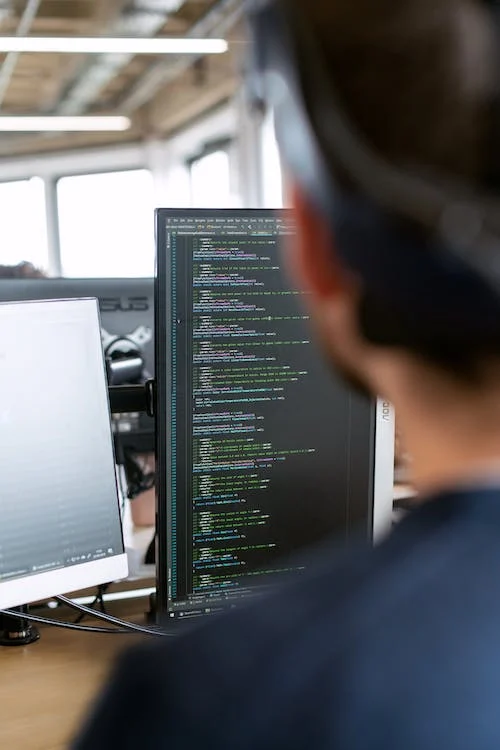Article by Charvi Sharma
The 1970 Patent Act, which modified the current legislation pertaining to patents in India, came into force in 1972.
In addition, the Patents Act, 1970 was amended in 2005, which extended product patents to all technology fields such as food and medicines, chemical products, and microorganisms.
- Related Read: Should You Copyright or Patent Your Software in India?
What is a Patent?
Patents are legal licenses issued by the government, giving the inventor of an invention, the right over its ownership and the exclusive right to make and sell it.
The invention becomes the assets of the inventor that no one can take over or imitate unless assigned to the person or licensed to him by the inventor himself.
But, what is an invention for the purposes of Indian law, in the first place?
The invention as described in Sec.2(1)(j) of the Patent Act, 2005 “Invention” means a new product or process involving an inventive step and capable of industrial application.
The basic idea of patenting goods is to safeguard the work of inventors from being forged, copied, etc. Patenting is done to prevent third-party without authorization-
- Making or manufacturing
- Using,
- Offering for sale
- Selling,
- Importing
- Distributing
- Licensing
the invention concerned.
However note that, keeping your invention as a trade secret is also a good idea depending on the product you are manufacturing or the service that you are providing. For example, Coca Cola keeps its drinks as a trade secret. Also, Google’s search algorithm is also a trade secret.
On the other hand, Apple’s iOS is patented.
Basically, this is a decision for you to make as the most important question that you need to ask yourself is – “can I keep this invention a secret even after commercializing it?”
If not, then run for patenting your invention. In fact, not patenting an invention that can’t be kept secret can seriously damage your business.
In India, the patentable subject matter is classified as-
- Any article, apparatus or machinery or it’s component
- Any, substance whether living or non-living, product, pharmaceutical product
- Any composition of matter, pharmaceutical products
- Any process, manner or art of manufacturing other than an essentially biological process
There are various goods that cannot be patented and are mentioned in –
- Inventions falling within the scope of Sec. (3) of Patents Act, 1970.
- Inventions falling within the scope of Sec. (1) of Sub-sec. 20 of Atomic Energy Act, 1962.
In India, there are two ways to file an application for patenting, which are through
(a) physical filing at the patent office and
(b) online or electric mode which came into existence from July 20, 2007.
If you want to file the application physically, the appropriate filing is the head office of the patent office or the branch office as the case may be within whose territorial limits the inventor resides, or has place of business or the place where the invention actually was made.
- If you don’t have any place of business or domicile in India, you need to provide for an address for service where the Patent Office can contact you.
The documents can be filled through the post, online mode, and or can be directly submitted through the hand.
The Patent Act states that either the inventor, his legal representative (in case of the deceased inventor), or a person assigned by him can file for acquiring a patent in the Patent Office according to the jurisdiction of the applicant.
Procedure for Obtaining a Patent in India

You can either apply for a patent on your own or you can receive assistance from approved patent agents.
Before we being, you should note that drafting a patent on your own is a highly complicated matter. As such, if you need any help in this regard or want us to draft a patent application for you, let us know and we will get it done at the lowest cost!
Consider the following two factors as they may contribute to the cost of obtaining a patent:
- Government fees for forms and renovations.
- When you want to get an agent, the expert’s fee
It is recommended you get yourself a licensed agent to conduct the procedures relating to filing the patent. Here are the steps required for the patent application:
- Disclosure of the invention
The first step is to inform the professional or your agent about your invention. This is achieved by concluding an agreement for non-disclosure. Further, register a power of attorney with your agent.
Every known fact about your invention should be submitted. Nothing should be held back or information should not be hidden from the authorized agent.
- Search for patentability
In this step, a professional usually charges a fee. They undertake a comprehensive search in all available repositories for evidence. In addition, he or she builds an invention-based patentability search report.
- Filling for a patent application
This is the beginning of the actual process. You will determine if you would like to continue with the application file after a thorough analysis of (any) current history of your invention.
Your invention must be ‘inventive’ in order to qualify for a patent.
It must be “technically advanced,” “economically relevant” or both, over and above any existing artwork.
The process by writing the application is called the patent drafting process, in which you decide to proceed.
You are prepared to file a patent after you have finished examining your draft patent and are satisfied with the scope and details.
You can file the patent application with fees in a prescribed manner. During the submission of the patent application at the patent office, you have to pay fees. The patent application will be published at the expiry of 18 months in the event of a request for early publication not being filed.
- Publication after 18 months
After 18 months from the filing date or priority date of an application (some of the previous) containing title, description, application number and the name of the claimant and the author, the patent application will be published automatically in the Official Journal.
The Patent Office Journal is available at www.ipindia.nic.in free of charge on the website of the Patent Office.
An early publication of the Indian patent application by filing a formal application is also provided.
- Pre Grant-Opposition /Representation by any person.
Any person under Section 11A of the Patent Act of 1970 may file a petition for the pre-grant opposition within six months of the application, in the form amended (the “Patents Act”) or before the grant of the patent.
Section 25(1) of the Patents Act provides the grounds for the filing of the representation. For pre-grant opposition, there is no charge for submitting representation.
Representation may be filed with respect to pre-grant opposition despite the absence of an examining application. However, only if a request for examination is received within the specified period is the representation taken into account.
- Request for examination
The examination process begins with the filing of an examining request. The application for examination must be made before the priority or filing date within 48 months.
The Patent Office issues the First Record of Review (FRR) after the application is submitted. In order for patents to be granted within 12 months from the date of issuance of a FRR, the applicant must (whenever required) respond to objections made by the Examiner.
- Post Grant Opposition
At any time after patent grant, the opposition may be filed by post-grant within one year of the date, that the patent is published.
Post-grant opposition must, together with the prescribed costs of Rs. 2400 for a natural person, Rs.6000 for small entities and 12,000 for large entities, be filed under prescribed form 7.
Related Read: LLP vs Private Company: What’s Better?
- Grant
If all the provisions in the Patent Act are complied with, the order of grant is given.
The period of each patent in India is 20 years from the first application filing date (whatever is older; could be from the date of the filing of the patent).
The 20-year term however begins with the International filing date in the case of Patent Cooperation Treaty National Phase applications.
- Renewal
After the patent is awarded, each patent proprietor must renew the patent each year with the payment of renewal fees as provided for in Schedule I.
There’s no renewal fee for the first two years.
From the third year on, the renewal charge is payable. The patent is discontinued if the renewal fee is not paid.
Following the filing of the application for a patent grant, an application for examination must be submitted by the Indian Patent Office to examine the application.
The applicant has an opportunity to satisfy the objections raised in the report after the initial examination report has been produced.
Within 12 months after issuance of the first examination report, the applicant must comply with the requirements.
If within the prescribed period of 12 months the requirements of the initial examination report are not met, the applicant will be treated for abandonment. Once the objections have been removed and compliance of requirements are met, the patent is issued and is informed to the Central Patent Office.
Documents Required for Filing of A Patent Application:
- Covering letter- indicating the list of documents;
- Application for Grant of Patent in Form 1 [section 7, 54 & 135 and Rule 20(1)] in duplicate;
- Complete/Provisional specification in Form 2 in duplicate [Section 10; Rule 13]
- Statement and Undertaking in Form 3 [Section 8; Rule 12];
- Power of Attorney in Form 26 (in original) (Rule 3.3 (a) (ii)); (if filed through attorney)
- Declaration of Inventor-ship in Form 5 (only in case of an Indian Application; (Rule 4.17);
- Request for examination: F18 8. Requisite Statutory fees (cheque / DD).
Rights Granted by Patent
When a patent is given to a drug, the patent holder is entitled to stop the development, use, offer for distribution, distribution, or importation of the patented drug in India by others.
If the patent is a process, the patentee shall have the right –
- to prevent the process being used,
- to use the product obtained by direct processing,
- to offer for sale, to sell, or
- to import the product directly obtained in India.
Patent infringement litigation can be initiated in India only following a grant of a patent, but may retrospectively include a claim from the date of issuance of the patent application.
Benefits of Getting Patent:
- Prevent your invention from getting stolen or infringed upon.
- Exclusivity freedom.
- Easy to buy and market a product with legal monopoly over it.
- More market share as your idea is turned into a brand.
- More money and higher profit margins, including by licensing the patent.
Wrapping It Up
Even though the whole process of patent filing is long and complex, the importance of it must be remembered. Digital progress is likely to simplify and make the process easier. Patenting ensures that no person can claim your invention’s rights.
If any infringement happens, you can take assistance from lawyers and avoid issues that can cause hindrances in marketing your product.
Need help in drafting your patent? Shoot us an email and we’ll help you get it done at the lowest cost!
Read Next:




















